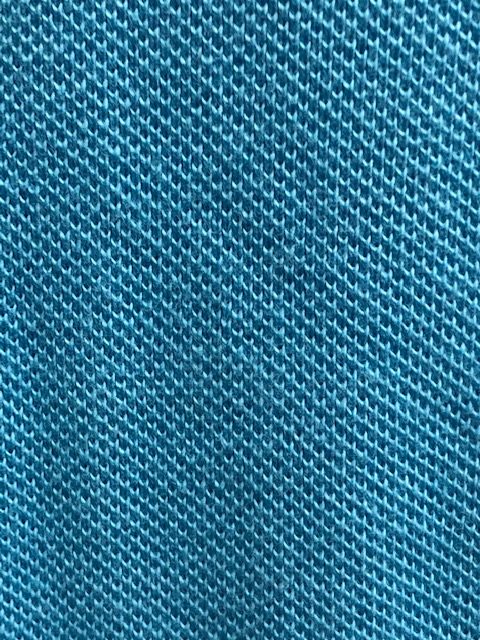Relieving Heat Fabric

Early summer has passed, and summer is approaching in earnest. Depending on the clothes you are wearing, you may feel hotter than the temperature.
Linen, cotton, and rayon are the most common materials that do not stick to the skin, but it is not only the material of the fabric, but also the way it is knitted that matters.
However, the comfort of the garment depends not only on the material, but also on the way it is knitted and woven.
A fabric that is knitted loosely is more airy and cooler than a fabric that is tightly woven with no gaps.
Let’s dive in the list of fabrics for summer that relieve the heat.
Moss Stitch

A type of knit fabric that combines flat knitting and tuck knitting to create an uneven texture.
Compared to plain knitting, it has less elasticity in the horizontal direction.
It is said that the name “fawn knitting” comes from the fact that the grain of the knitted fabric resembles the mottled pattern on the back of a deer.
The unevenness of the knitted fabric reduces the surface area in contact with the skin, which allows for excellent air permeability and a dry, comfortable feel even when perspiring.
Polo shirts are a standard material for summer wear and a typical item. It is also ideal for sportswear and cool biz business casual coordination.
Seersucker

This fabric is characterized by its shibari, which is woven by alternating taut and relaxed warp yarns.
It is a type of “shibira-weaving” that uses two types of warp yarns with different elasticity to create shrinkage wrinkles due to the difference in the degree of shrinkage.
It is called “Sucker” for short. Nowadays, the fabric is sometimes woven by chemical processing.
The unevenness of the fabric reduces the area in contact with the skin and prevents heat from being trapped in the fabric, giving it a cool, refreshing feeling.
Since the material is wrinkled in nature, it is an easy-care fabric that can be worn without ironing after washing.
It is an indispensable material for summer and is used for summer pajamas, jinbei, and yukata (summer kimono) because of its thin, light, and silky feel. Recently, casual jackets and shirts are also becoming more common.
Similar to soccer, there is a fabric called ripple that is used for similar purposes. While soccer is a fabric that utilizes the shrinkage rate of the yarn to create unevenness, ripple is a fabric that has undergone a “ripple process” using an alkaline solution to create unevenness.
Chambray

This fabric is characterized by its uneven marbled appearance. It is a type of yarn-dyed fabric that combines dyed and undyed yarns.
It has an atmosphere similar to that of denim fabric, and most people think of denim fabric when they think of marbled fabric.
Both denim and chambray use colored yarn for the warp and white yarn for the weft. They look similar because the yarns are used in the same way, but they are woven in different ways.
Denim fabric is woven in a “twill weave,” while chambray is woven in a “plain weave. Because it is plain woven, it is generally thinner and lighter than denim.
Compared to denim, it is lighter and more breathable, making it suitable for tops. Because it is durable and easy to care for despite its thinness, chambray shirts are a staple item for men and women of all ages.
Waffle fabric

Waffle fabric is a woven fabric with massively uneven surfaces.
As it looks, it is probably named after the waffle of sweets.
In Japan, it is also called “beehive weave” because of its resemblance to a beehive.
Because of its uneven surface, there are few adhesive surfaces on the skin, and the structure has spaces between yarns, so it absorbs moisture greatly, making it breathable and comfortable to use even in spring and summer. It is used for towels, sheets, and T-shirts.
Conclusion
Comfort is totally different depending on the weave, so why not choose clothes made of fabrics with a smooth feel like the ones we introduced here so that you can spend the hot summer as comfortably as possible. For more Japanese fabric, please visit ApparelX’s fabric list.



